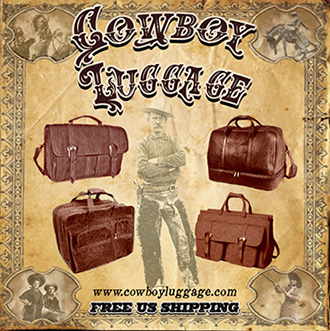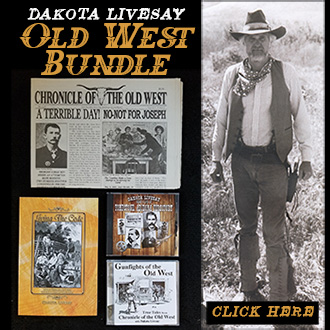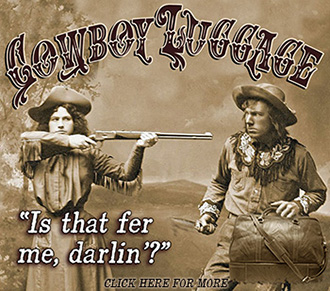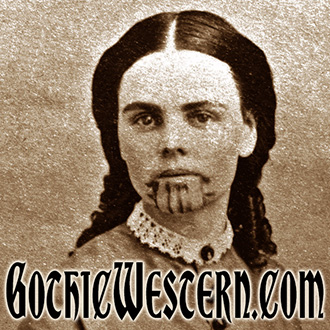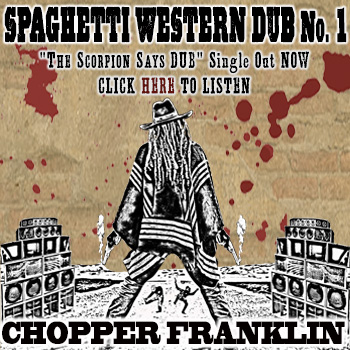OLIVER LOVING
On September 25, 1867 pioneering cattleman Oliver Loving died from gangrene poisoning in Fort Sumner, New Mexico. Living h ad been attacked by 500 Comanche at the Pecos River. Although he managed to escape and reach Fort Sumner, he had been shot in the arm and leg. Loving soon developed gangrene in his arm, a common infection in those days. Even then he might still have been saved had his arm been removed, unfortunately the fort doctor had never amputated any limbs and didn’t want to undertake such work.
ad been attacked by 500 Comanche at the Pecos River. Although he managed to escape and reach Fort Sumner, he had been shot in the arm and leg. Loving soon developed gangrene in his arm, a common infection in those days. Even then he might still have been saved had his arm been removed, unfortunately the fort doctor had never amputated any limbs and didn’t want to undertake such work.
If this story sounds familiar, it’s because the lives of Oliver Loving and his partner, Charles Goodnight, were portrayed in the movie Lonesome Dove. Robert Duvall played Gus, a takeoff of Oliver Loving.
OKLAHOMA LAND RUSH
 On September 16, 1893, the largest land run in history begins with more than 100,000 people pouring into the Cherokee Strip of Oklahoma to claim their homesteads. With a single shot from a pistol the mad dash began, and land-hungry pioneers on horseback and in carriages raced forward to stake their claims to the best acres.
On September 16, 1893, the largest land run in history begins with more than 100,000 people pouring into the Cherokee Strip of Oklahoma to claim their homesteads. With a single shot from a pistol the mad dash began, and land-hungry pioneers on horseback and in carriages raced forward to stake their claims to the best acres.
Ironically, not many years before that same land had once been considered worthless desert. Early explorers of Oklahoma believed that the territory was too arid and treeless for white settlement, but several suggested it might be the perfect place to resettle Indians, whose rich and fertile lands in the southeast were increasingly coveted by Americans.
By the late nineteenth century, farmers had developed new methods that suddenly made this land valuable. The giant Cherokee Strip rush was only the largest of a series of massive “land runs” that began in the 1890s, with thousands of immigrants stampeding into Oklahoma Territory and establishing towns like Norman and Oklahoma City almost overnight.
HOPALONG CASSIDY
 After almost 40 years of riding across American TV and movie screens, the cowboy actor William Boyd, best known for his role as Hopalong Cassidy, died on September 12, 1972 at the age of 77.
After almost 40 years of riding across American TV and movie screens, the cowboy actor William Boyd, best known for his role as Hopalong Cassidy, died on September 12, 1972 at the age of 77.
His greatest achievement was to be the first cowboy actor to make the transition from movies to television. After World War II Americans began buying television sets in large numbers for the first time, and soon I Love Lucy and The Honeymooners were standard evening fare for millions of families. But despite their proven popularity in movie theaters, westerns were slow to come to TV. Many network TV producers scorned westerns as lowbrow “horse operas” unfit for their middle- and upper-class audiences…As if I Love Lucy and The Honeymooners was highbrow.
During the 1930’s, William Boyd made more than 50 successful “B-Westerns” starring as Hopalong Cassidy. After the war, Boyd recognized an opportunity to take Hopalong into the new world of television, and he began to market his old “B” westerns to TV broadcasters in Los Angeles and New York City. A whole new generation of children thrilled to “Hoppy’s” daring adventures, and they soon began to ask for more.
Rethinking their initial disdain for the genre, producers at NBC contracted with Boyd in 1948 to produce a new series of half-hour westerns for television. Soon other TV westerns followed. In 1959, seven of the top-10 shows on national television were westerns. The golden era of the TV western would finally come to an end in 1975 when the long-running Gunsmoke left the air, three years after Boyd died.
NORTHFIELD RAID
 The movies show frontier town folk as being meek and easily intimated. But this was not so. These were people who were tough enough to brave the trip to the frontier, as well as being tough enough to endure frontier life. And after 1865 many were ex-soldiers.
The movies show frontier town folk as being meek and easily intimated. But this was not so. These were people who were tough enough to brave the trip to the frontier, as well as being tough enough to endure frontier life. And after 1865 many were ex-soldiers.
A good example of the toughness of the frontier people is an event that took back in 1876 on September 7.
The James-Youngers were the “cock of the walk.” They were robbing everything in sight. And even though the famous Pinkerton Detective Agency was after them, the Pinkertons were stymied at every turn.
So, the gang decided to go to Northfield, Minnesota and rob a bank there.
From the moment they walked into the bank, they encountered resistance. The bank cashier said the safe was on a time clock. Then a bank teller ran out the back door and sounded the alarm.
The citizens of Northfield surrounded the bank and shot the robbers as they tried to escape. The result was that, with the exception of Jesse and Frank James, the gang was either shot up in Northfield or was captured by a posse some two weeks later.
It seems there was another gang known as the Daltons who had a similar problem in Coffeeville, Kansas.
JOHN WESLEY POWELL
Today’s story is a lesson about quitting.
Back in 1869 John Wesley Powell took an expedition of 11 men and 4 wooden boats down the Colorado River through the Grand Canyon. It was an under-financed project, and virtually every day the expedition was on the verge of destruction.
Wesley Powell took an expedition of 11 men and 4 wooden boats down the Colorado River through the Grand Canyon. It was an under-financed project, and virtually every day the expedition was on the verge of destruction.
On this date, near the lower end of the canyon, the party saw a giant rapids. They spent the night on the shore. Powell wrote, “The billows are huge and I fear our boats could not ride them…There is discontent in the camp tonight and I fear some of the party will take to the mountains but hope not.”
The next day, convinced the rapids were impassable, three of Powell’s men did leave. On this day in 1869, Seneca Howland, O.G. Howland, and William H. Dunn said goodbye to Powell and the other men and began the long climb up out of the Grand Canyon.
The remaining members of the party steeled themselves, climbed into boats, and pushed off into the wild rapids. Amazingly, all of them survived and the expedition emerged from the canyon the next day.
When Powell reached the nearest settlement, he learned the three men who left had been less fortunate–they encountered a war party of Indians and were killed.
JOHN WESLEY HARDIN ARRESTED
August 23, 1877 climaxed probably the most dramatic manhunt in the Old West.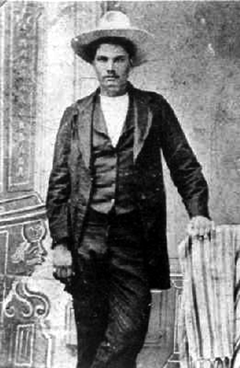
Although John Wesley Hardin had killed a number of men, on May 26, 1874 Harden Killed Deputy Sheriff Charles Webb in Texas and killing a lawman couldn’t be overlooked.
For three years Hardin was able to elude the Texas Rangers by using an alias and keeping a low profile. He also moved to Florida.
But, the Rangers discovered where he was, and even though they had no authority in Florida, sent John Armstrong after him.
Acting on a tip, Armstrong spotted Hardin in the smoking car of a train stopped at the Pensacola station. Local deputies were stationed at both ends of the car, and the men burst in with guns drawn. Hardin reached for the gun holstered under his jacket. The pistol caught in Hardin’s fancy suspenders, this allowed Armstrong time to club Hardin with his long-barreled .45 pistol instead of having to shoot him.
They spirited Hardin back to Texas on the next train. Hardin was tried and found guilty of killing Sheriff Webb and sentenced him to life in the Texas state prison at Huntsville. He served 15 years before the governor pardoned him.
VIGILANTES
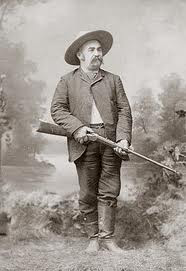 One of the aspects of the Old West that has always intrigued me was the vigilantes. I can understand the frustration with how many times crime was running rampant, with towns popping up ahead of the town’s infrastructure…which included the law.
One of the aspects of the Old West that has always intrigued me was the vigilantes. I can understand the frustration with how many times crime was running rampant, with towns popping up ahead of the town’s infrastructure…which included the law.
And even in more developed towns, the law was handicapped because of the number of lawmen, the territory they had to cover, the technology and even that sometimes the lawmen were also the outlaws.
Probably the most amazing aspect of the vigilantes is that they were usually known by everyone…sometimes pictures were taken…yet I’m not aware of any vigilante being tried for his actions.
Why am I talking about this at this time? This is the birthday of one of the Old West’s most famous vigilantes, John X. Beidler or just “X” as he was known by everyone.
He was a leader of the Montana vigilantes. Unlike most vigilantes, who tried to remain unknown, X relished the notoriety. He was the principal hangman for at least five of the vigilante’s victims, and he survived several narrow escapes in his relentless pursuit of dangerous men.
After Montana was rid of “The Innocents”…the name of the outlaw gang…the vigilantes disbanded.
As an old man X fell on hard times and lived off the charity of people who remembered his service as a vigilante.
When he died in Helena, Montana, in 1890, his death certificate listed his occupation as “Public Benefactor.”
JOAQUIN MURRIETA
On July 25 back in 1853 Joaquin Murrieta was supposedly killed by California Rangers led by L.A. Deputy Sheriff Harry Love.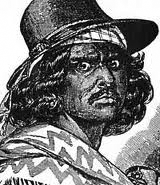
Joaquin and his gang had been terrorizing Anglos in Central California, and the state had put a reward of $6,000 on his head.
Just before the reward deadline had run out Harry Love and his men ran into a group of Mexican outlaws and engaged in a fire-fight.
When I said the reward was “on his head” it was literally that. Love brought in Joaquin’s severed head in a jar of whiskey.
Since there were several Spanish outlaws with the name of Joaquin, many said it wasn’t “the Joaquin.”
But Harry Love didn’t care. He got his $6,000 and later he took Joaquin’s head on tour for a $1 a look.
EMPERIOR NORTON
Did you know that back in the 1870’s the United States was ruled by an Emperor? Well, even back then most of the citizens didn’t know  it. Our Emperor was Emperor Norton, and he lived in San Francisco.
it. Our Emperor was Emperor Norton, and he lived in San Francisco.
If you visit this link you’ll get the full story:
SACKETTS
Friday I picked up a DVD of the mini series TV adaption of Louis L’Amour’s Sackett books…I got it at Walmart for $5.00.
And Saturday afternoon I watched it. It was made in 1979. The movie starred Tom Selleck, Sam Elliott, Glenn Ford and Ben Johnson as well as a slew of other great character actors like Slim Pickens, Jack Elam and Buck Taylor.
I had watched it when it originally came out, but sure did enjoy seeing Tom Selleck and Sam Elliott back when they were much younger…just as I was.
It was well worth the $5.00 investment.
What ever happened to Jeff Osterhgage who played Tyrel Sackett?
WARREN EARP
We’ve all heard about bringing a knife to a gun fight. Well, on this date back in 1900 that’s just what Jam es, Morgan, Virgil and Wyatt’s little brother did.
es, Morgan, Virgil and Wyatt’s little brother did.
After participating in Wyatt’s ride of vengeance because of the cowboy’s wounding of Virgil and killing Morgan, Warren went to live with his parents in Colton, California
With Warren regularly getting into trouble, his father got fed up with him and sent him packing. Warren ended up in Willcox, Arizona where he did a little cowboying and a lot of drinking. On July 6, 1900, Warren got crossways with a John Boyet. Some say it was because of a woman, others say it was a carry-over from the Tombstone days. In a confrontation, Warren kept pushing Boyet, until Boyet finally pulled his gun and killed Warren. This was a case of bringing a knife to a gunfight. For, it was discovered that Warren didn’t have a gun. But he did have a knife.
It seems that, to his dying day, Warren was trying to live up to the reputation of his brothers Wyatt and Virgil by being able to buffalo a man, and disarm him.
CELEBRATING THE 4TH
In 1864 Orlando Robbins became the deputy sheriff of the gold mining town of Idaho City, Idaho. With the Civil War taking place in the east, 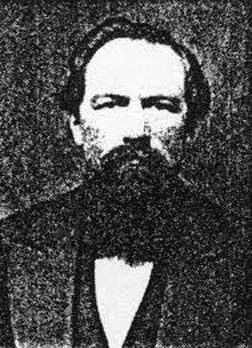 the miners were polarized into Union and Confederate camps. Robbins’ major job was separating drunken miners supporting their individual cause.
the miners were polarized into Union and Confederate camps. Robbins’ major job was separating drunken miners supporting their individual cause.
As Independence Day approached, the Confederate supporters said they were not going to allow any Yankee sing the “Star Spangled Banner.” Now, Robbins, a Union supporter, wasn’t going to let anyone tell him what to do. So, on July 4, 1864 Orlando Robbins walked into a tavern of southern sympathizers, climbed on a pool table, pulled his two pistols, and with the tavern silent started singing the “Star Spangled Banner.” After finishing, he walked out, and the crowd parted like the Red Sea for Moses.
Orlando continued as a lawman, and in his 60’s he was dealing with outlaws one third his age. Truly, Orlando Robbins was as great a hero as any of the more famous Old West lawmen.
NEW YORK CATTLE DRIVE
Did you know that on this date back in 1854 the first cattle drive from Texas arrived in New York City? You would if you’re a subscriber to This Week In The Old West.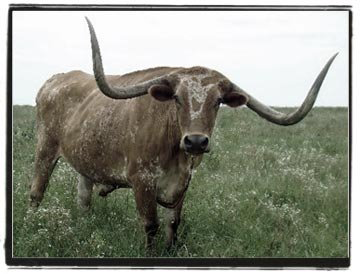
In case you’re not, here’s the story:
This cattle drive wasn’t done by a Texas cowboy, but an English immigrant who grew up in Illinois, by the name of Thomas Ponting.
Ponting wasn’t a novice around cattle. As a youth in England he drove cattle to London. And later in Illinois he drove cattle up to Wisconsin. Hearing about cheap cattle in Texas, he and partner Washington Malone went down there and bought 800 longhorn cattle.
Four months after their start they got to Illinois. It was winter. So they took time to fatten the cattle on corn. In the spring Ponting sold all but 150 of the longhorns. Those 150 he wanted to take to New York. When they got to Muncie,
Indiana Pointing got the idea of transporting them the rest of the way by rail car.
When they arrived in New York, they were taken to the Hundred Street Market and auctioned off.
Although Pointing’s cattle drive was a great feat in itself, his greatest achievement was to show that cattle could be brought 2,000 miles from Texas and sold at a profit. And with this a new page in Old West history was opened.
If you’re interested in receiving a story like this via email each Sunday, go to www.ThisWeekInTheOldWest.com. It’s free.
LITTLE BIG HORN
On this day back in 1876 the United States was preparing to celebrate its 100th birthday when news came from the western frontier that much of the 7th Cavalry led by Colonel George Armst rong Custer had been wiped out by Indians led by Sitting Bull and Crazy Horse.
rong Custer had been wiped out by Indians led by Sitting Bull and Crazy Horse.
Custer had been told by his Indian scouts that he was about to attack a village of many thousand Indians…Some estimates say as many as 11,000 Indians. Dismissing his scouts reports Custer divided his 600 men into four battalions.
It didn’t take long for Custer to realize his scouts were right. Custer and his 215 men were attacked by about 3,000 Indians, and within an hour they were all wiped out.
This was the Indian’s greatest victory in the Plains Indian War. But the Indians weren’t able to enjoy it for long. The army accelerated their efforts against the Indian. Within five years virtually all the Sioux and Cheyenne would be on reservations.
REPUBLIC OF CALIFORNIA
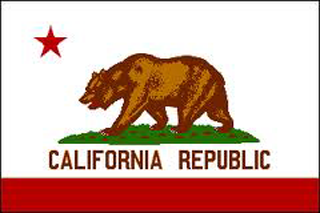 We all know that Texas was an independent republic before becoming a state. But did you know that California was an independent republic too?
We all know that Texas was an independent republic before becoming a state. But did you know that California was an independent republic too?
Although owned by Mexico, back in 1846 there were very few Mexican settlers in California. In reality there American settlers comprised the largest segment of the population.
On June 14, 1846, anticipating a war with Mexico, 33 Americans lead by William Ide invaded the Mexican outpost of Sonoma, north of San Francisco. They surrounded the home of Mexican General, Mariano Vallejo. With a bloodless victory, the Americans took a cotton sheet and with red paint they made a flag of a grizzly bear and single red star…A reference to the Texas Republic…and printed the words on the flag “California Republic”. The revolt was known as the Bear Flag Revolt.
Three weeks after California became an independent republic; American forces took control of Monterey and officially raised the American flag over California. Since this was what the American rebels wanted, they dissolved their government.
Incidentally, that Bear Flag became the official flag of California.
THE LONG RIDERS
 I had a couple of hours downtime yesterday and I decided to watch a western movie. I picked one from my collection of DVD’s that I hadn’t seen in a while…The Long Riders.
I had a couple of hours downtime yesterday and I decided to watch a western movie. I picked one from my collection of DVD’s that I hadn’t seen in a while…The Long Riders.
This movie was written and produced by Stacey and James Keach. It’s about the James-Younger gang. As far as I’m concerned it’s an extraordinary film. The unique thing is that actor brothers play outlaw brothers. The Carradines are the Youngers, and the Keachs are Jesse and Frank. Even Robert Ford and his brother are played by brothers.
Historically, it’s fairly accurate as well. Probably Bell Starr had a bigger role in the movie than she did in the life of Cole Younger.
What’s your opinion of the movie?
PEARL HART
Just when everyone thought the wild Old West was gone, on this date back in 1899 a small slight woman by the name of Pearl Hart and 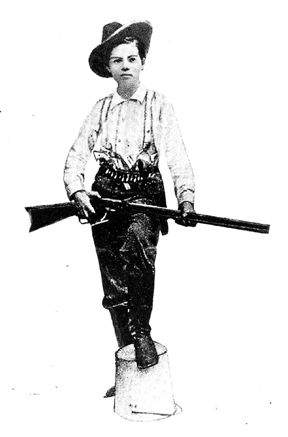 her boyfriend held up a stagecoach in the Florence, Arizona area.
her boyfriend held up a stagecoach in the Florence, Arizona area.
Their take was a little over $400. But they weren’t able to spend it, because in a short time they were captured and jailed.
Shortly afterward, with the help of some men, Pearl escaped. But, because of her fame, she was recognized and returned to jail.
Pearl and her boyfriend were tried and convicted. The boyfriend got 30 years and Pearl got 5.
Pearl’s life after she got out of jail is surrounded in myth. Some say she became “The Arizona Bandit” with Buffalo Bill and in vaudeville. Others say she married a Calvin Bywater and settled down to a life of domestic bliss.
Whichever one it was, Pearl never got crosswise with the law again.
OLD WEST PHOTOS
Our good friend Michael F. Blake turned us on to some unbelievable Old West pictures that were taken between 1867 and 1884.
It’s just amazing the skill of photographers during this time. Especially when you consider if they can take a dozen pictures a day they’re working hard.
Here’s the link: http://www.theatlantic.com/infocus/2012/05/the-american-west-150-years-ago/100304/
CYNTHIA ANN PARKER
On this date back in 1836 on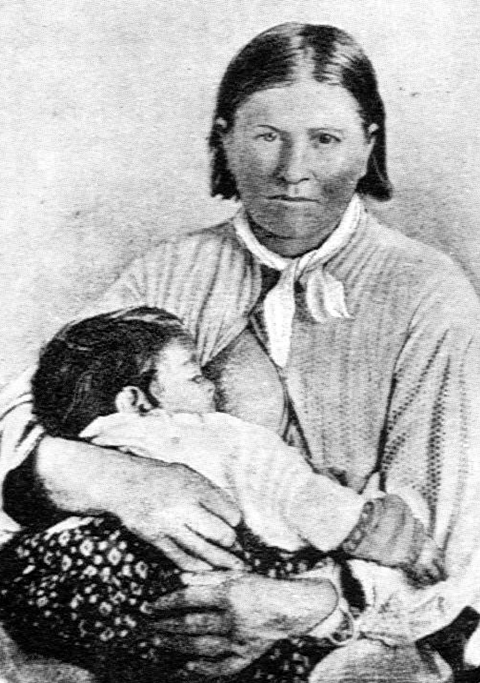 e of the Old West’s most tragic events began to unfold.
e of the Old West’s most tragic events began to unfold.
At the age of nine, Cynthia Ann Parker’s family was killed and she, along with some other children, was kidnapped. The Comanche took her, and she lived with them for 25 years.
She became the wife of Peta Nocona, and gave birth to two boys and a girl. Comanche warriors normally take more than one wife. Nocona was happy with just Cynthia Ann.
In December 1860 a group of Texas Rangers attached Nocona’s village and rescued Cynthia Ann and her daughter.
Rather than feeling she had been rescued, Cynthia Ann felt she was kidnapped a second time. Cynthia Ann resigned herself to a life among a people she no longer understood. In 1863 her daughter died. And she died seven years later of influenza brought on by self-imposed starvation.
Incidentally, her son Quanah Parker became the last great war chief of the Comanche tribe. One wonders if he would have gone to war had Cynthia Ann not been kidnapped.
DICK FELLOWS
 We see outlaws in the movies riding at breakneck speed to chase down a stagecoach, and then jump from the horse to the stagecoach to encounter the driver and guard. All outlaws weren’t that good of horsemen.
We see outlaws in the movies riding at breakneck speed to chase down a stagecoach, and then jump from the horse to the stagecoach to encounter the driver and guard. All outlaws weren’t that good of horsemen.
One such person got out of San Quentin Prison on this date back in 1881. His name was Dick Fellows.
Raised in Kentucky, Dick Fellows…An alias…came to California, and falling on hard times decided to rob stagecoaches. He picked the correct stage. It was carrying $240,000. However, as he was getting ready to go after the stage, the stolen horse he was riding threw him, and he was knocked unconscious.
Not one to give up, Fellows stole another horse and held up the next stage. He was successful. After the stage left, he tried to lift the strong box on his horse. The horse startled and raced off.
With night coming on he started walking with the strong box. Next he fell over a high bluff, knocking himself unconscious a second time. He woke up with a broken leg and foot.
Although the strong box has $1800 in it, he never got a chance to spend it, before Wells Fargo Detectives caught up with him.
When he got out of San Quentin, I believe most people would take the hint and go straight. But not Fellows. He went back to robbing stages, only to be caught again and sentenced to life in Folsom Prison.
BATTLE OF PALO ALTO
On this date back in 1846, Zachary Taylor led American forces against an attacking Mexican Army in the Battle of Palo Alto.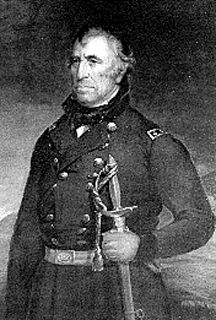
Mexico had never recognized the independence of Texas, and when the U.S. annexed Texas, Mexico sent troops into the disputed Rio Grande River area.
President Polk ordered General Taylor into Texas to defend the border. It was viewed by Mexico as a hostile invasion and the Mexican Army attacked the American forces.
Although the Mexican forces were much larger in number, General Taylor was not only victorious in this battle; he won four additional battles and gained control over the three northeastern Mexican states.
Incidentally, as a result of these and other victories, Zachary Taylor became a national hero referred to as “Old Rough and Ready”. This eventually catapulted him into the Presidency. Unfortunately, he was a much better general than President.
ANDY ADAMS
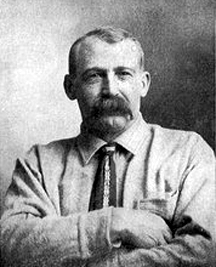 On this date back in 1859 Andy Adams, the author of The Log of a Cowboy was born. He’s considered one of the most authentic chroniclers of the Old West.
On this date back in 1859 Andy Adams, the author of The Log of a Cowboy was born. He’s considered one of the most authentic chroniclers of the Old West.
Andy was born in Indians and ran away from home when a teenager. Ending up in Texas, he became a cowboy during the golden era of the cowboy. When the cattle drives ended he went to Colorado looking for gold. Not able to find his fortune, he settled down in Colorado Springs.
Andy began writing stories of his experiences as a cowboy. He wrote and published four books in four years. He’s best known for The Log of a Cowboy. This book is a must for any person interested in the Old West cowboy.
TIME ZONES
Have you ever wondered how time zones came about? Well, wonder no more. All you have to do is to click on the video  link below and you’ll know the whole scoop.
link below and you’ll know the whole scoop.
http://www.youtube.com/watch?v=5EKHRnnonxE
BAT MASTERSON
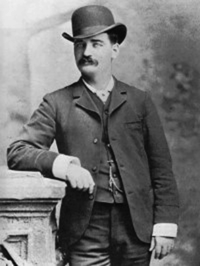 I find Bat Masterson one of the more intriguing men of the Old West. He is known as a gunfighter, but he was in very few gun fights.
I find Bat Masterson one of the more intriguing men of the Old West. He is known as a gunfighter, but he was in very few gun fights.
The last gunfight he was in took place on this day back in 1881. It was to help out his brother Jim. Jim owned a business in Dodge City and was having trouble with Al Updegraff, a business partner. It had even involved gunfire.
I don’t know if Jim actually said the words, “I going to get my big brother and he’ll beat you up,” but Bat, in Tombstone at the time, heard about the conflict and jumped on a train to Dodge City.
Not a man to mince words, Bat immediately spotted Updegraff and brother-in-law Peacock and said, “I have come over a thousand miles to settle this. I know you are heeled, now fight!” All three men immediately drew their guns.
In the fracas Updegraff took a bullet in his right lung. The mayor and sheriff arrived with shotguns and stopped the shooting. No one was mortally injured in the shooting, and in accordance with Old West standards, the gunfight was fought fairly. So Masterson was fined $8. He paid the fine and took the next train out of Dodge City.
As an aside, had Bat not left Tombstone to help his brother, the chances are excellent he would have been around to help his friend Wyatt Earp in another gunfight…The one that took place at the OK Corral.

